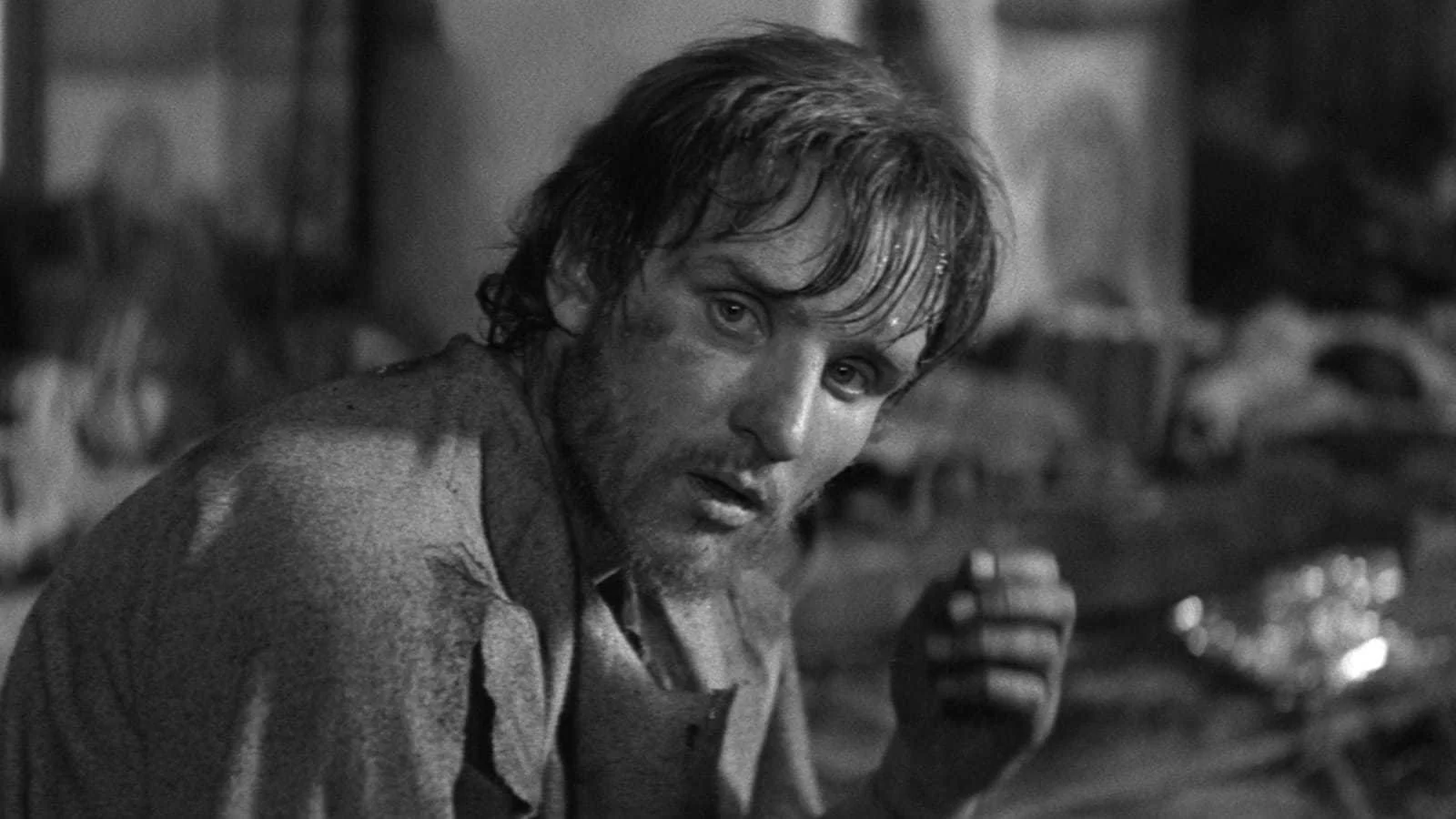The Passion of Andrei
An airship alights, birds crow, mist rises from the trees and the muddy ground and a peasant is executed. Andre Tarkovsky’s portrait of Medieval Russia Andrei Rublev throws you in the deep end from the opening sequences. A hypnotic meditation on life, death, history, fate, faith and the role of the artist in society, it's like few movies I’ve ever seen.
The movie ostensibly follows the life of Andrei Rublev, a Russian Orthodox monk and icon painter of the late 14th early-15th century (c.1360-c.1430). Rublev was later canonized in the Russian Orthodox Church and his style of icon painting became considered the pinnacle of artistic achievement for the Church. All later iconographic painters had to adhere to his style.
That is merely the setting though. The world of Andrei Rublev is enchanted. It is cruel and dirty, and it stinks…and it is enchanted. I was enveloped by this movie as I watched it. You can feel the mud clinging to your shoes, the smell of manure, the misery and poverty and blood. I don’t know how Tarkovsky pulled off this feeling of place, but he does. Hopefully, it gives at least a sense of what it was like to live life in this era. The way Tarkovsky portrays nature is …mystic. God is in nature. The God of the Bible, but also something older, something darker, something in nature. The pagan gods of old still haunt the outer edges of the woods, away from the prying eyes of the Church and its zealously dogmatic authorities. War, invasion, and despotic nobles are likewise forces of nature; they are unaccountable and unavoidable tragedies to be endured.
Through it all our protagonist wanders. He is our guide through this maelstrom of superstition, poverty, and violence. Throughout it all, Andrei Rublev goes seeking some meaning in the suffering. (the scenes of Russian villages being ravaged by Tartar invaders is all the more poignant knowing that everyone involved in making the film had the lived experience of Russia being ravaged by a modern barbarian horde.)
This is also one of the least “materialist” movies I think I have ever seen, and it's honestly incredible it was made at all. Production began in 1964, during the “Khrushchev Thaw”, a period of relative artistic freedom inaugurated by the de-Stalinization period of reforms in the Soviet Union. This era was inaugurated by Khrushchev succeeding Stalin to the premiership in 1953 and lasted until Khrushchev was pushed out of the premiership by the Brezhnev faction in an internal party coup in 1964. The Khrushchev reform period touched many aspects of Soviet life, from domestic policy to foreign affairs, but the “Thaw” refers specifically to the loosening of the strictures of artistic censorship that had been de jure during the Stalin era. Artists in the Soviet Union were given greater leeway to explore a range of topics, themes, and styles that didn’t have to conform as neatly to Stalinist-era Marxist dogma. They didn’t have to be as explicitly propagandistic. There was room for the contemplative spirituality of Tarkovsky, or even some fun to be had at Soviet officials expense such as in Mikal Kalatzov’s 1957 war/romance masterpiece The Cranes are Flying.
The “Thaw” ended with Brezhnev’s elevation in ‘64, which ushered in a new era of artistic conformity to the party line. This would have consequences for Tarkovsky and his film. Andre Rublev began production in 1964, but filming was not completed until 1966 by which point the “Thaw” was over. It was only screened once in Moscow theaters in 1966, and Premier Brezhnev walked out of the showing. The authorities demanded cuts, which Tarkovsky endlessly fought. Further cuts and some finagling from the Communist Party of France allowed it to be entered into the 1969 Cannes film festival, and after some more wrangling, Soviet authorities finally allowed a broad release within the Soviet Union in 1971. By that point, Tarkovsky was in production on his next film: the more suitably “materialist” sci-fi epic Solaris (1972).
In Tarkovsky's hands, the artist becomes a world-historical figure on a perpetual search for the divine. The final scenes of the movie revolve around a peasant constructing a bell and leave you contemplating what art is for and what an artistic life really means. I am still wrestling almost a year later to understand how this film has affected me. I’m still not entirely sure, but I find myself more and more these days returning to the image of St. Andrei walking through the snowy woods searching for… something.
If you enjoyed this article, please consider becoming a patron of Hyperreal Film Journal for as low as $3 a month!



Andrew Turner is a writer based in Austin, TX. He draws his insights on film from his background in History and Political Science and is interested in how these intersect with each other. He has lately been writing about 20th century history and film, particularly of the Eastern bloc. He also has an interest in his own native central Texas, its politics, food, economy, and cultural output. He recently wrote about the rise of Austin to its current status as a major technopolis. He has written for the Austin Chronicle, The Quorum Report, and also can be found on substack.
https://andrewturner.substack.com/